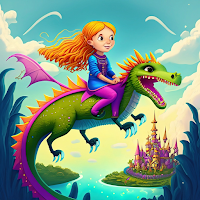One of the things that has had me excited this school year is really diving into the updated Adobe Express and seeing how it can be used for assessment. When I showcased Express to my teachers at the start of the year, there were plenty of "oohhs" and "ahhhs". Animate from Audio really got the foreign language teachers excited because they saw it is a great way to engage students who have been historically shy about recording themselves speaking and sharing it with class. Being able to choose a silly avatar represent their words should reduce much of their anxiety. I was thinking of other ways that content areas might use Adobe Express for assessment.
Here are four ways you can tap into the power of Adobe Express to evaluate your students' understanding and skills in innovative ways.
1. Digital Storytelling: Narrate a Historical Event
Digital storytelling is an exciting avenue for students to connect with historical events, as they use visuals and narrative to bring the past to life. Using Adobe Express, students can select a variety of images, design elements, and text to depict significant historical events.
How It Works: Assign a specific historical event or period. Ask students to research and then construct a digital story that provides a visual narrative. Not only does this allow them to dive deep into historical context, but they can also explore themes, significance, and personal connections. As an assessment, you can evaluate their research skills, storytelling abilities, and their grasp of historical context.
2. Scientific Process Visualization: Detail an Experiment's Progress
Sometimes, the best way to understand a scientific process is to see it visually. Adobe Express provides a platform where students can design infographics or visual reports that detail each step of their scientific experiment.
How It Works: After completing an experiment, students can use Adobe Express to create a step-by-step visual report. This will demonstrate their understanding of the scientific method and the specific experiment they conducted. By breaking down each stage with visuals, students can clearly communicate their process, findings, and conclusions.
3. Literary Analysis: Visual Book Reports
Gone are the days of the standard written book report. Let's elevate the experience with visual book reports! Students can utilize Adobe Express to craft a creative representation of their chosen book, including key themes, character developments, and critical scenes.
How It Works: Students select a book they've read and use Adobe Express to craft a visual book report. They can include quotes, images representing key scenes, and their own designs. By juxtaposing these elements, students can offer their interpretation and analysis of the book, showcasing their comprehension and critical thinking skills.
4. Geometry in Real Life: Shapes and Design
Geometry is everywhere, and Adobe Express can help students see it. By tasking students with identifying and outlining geometric shapes in real-world photos, they can connect classroom lessons with their surroundings.
How It Works: Students take or find pictures of real-world objects or scenes. Using Adobe Express, they highlight and label the different geometric shapes they identify. This assessment not only tests their knowledge of geometry but also their ability to connect theory with real-world application.
Adobe Express has proven to be more than just a design tool. It's a gateway to interactive and immersive learning experiences, allowing educators to assess students in ways that are both engaging and insightful. By incorporating these creative assessment methods into your teaching approach, you not only evaluate student understanding but also foster skills like critical thinking, creativity, and technological literacy.
Hugs and High Fives,
NP
(Images generated using Adobe Firefly.)







